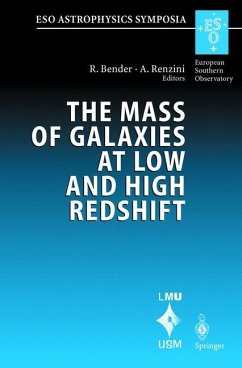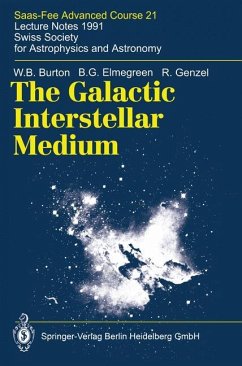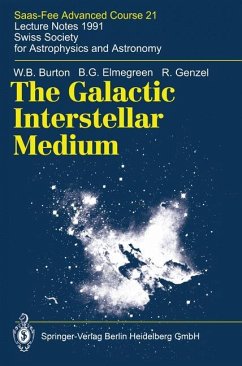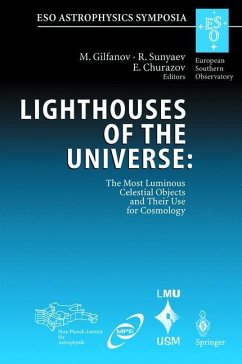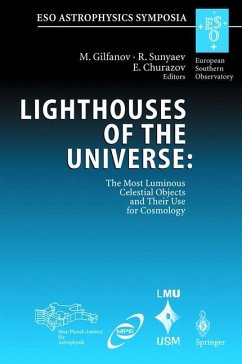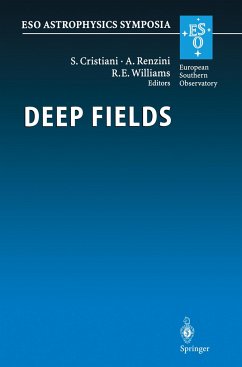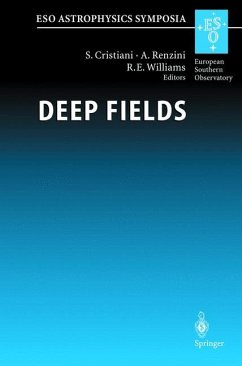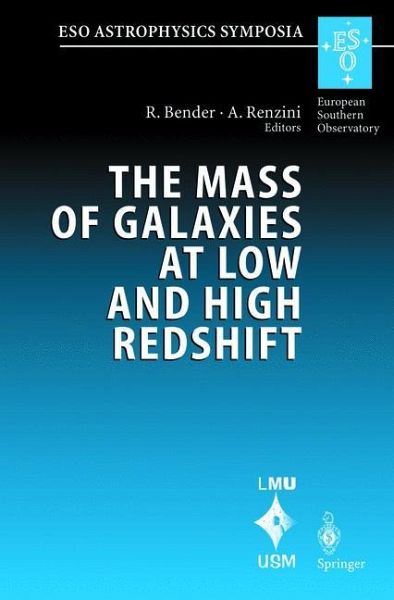
The Mass of Galaxies at Low and High Redshift
Proceedings of the European Southern Observatory and Universitäts-Sternwarte München Workshop Held in Venice, Italy, 24-26 October 2001
Herausgegeben: Bender, Ralf; Renzini, Alvio
Versandkostenfrei!
Versandfertig in 6-10 Tagen
34,99 €
inkl. MwSt.

PAYBACK Punkte
17 °P sammeln!
Measuring the masses of galaxies as a function of redshift is perhaps one of the most challenging open issues in current astronomical research. The evolution of the baryonic and dark matter components of galaxies is not only a critical test of the hierarchical formation paradigm, but ultimately also provides new clues on the complex interplay between star formation, the cooling and heating of gas and galaxy merging processes.This book reviews current techniques to measure the baryonic (stellar) and dark masses of nearby galaxies, and focusses on ongoing attempts to measure these same quantitie...
Measuring the masses of galaxies as a function of redshift is perhaps one of the most challenging open issues in current astronomical research. The evolution of the baryonic and dark matter components of galaxies is not only a critical test of the hierarchical formation paradigm, but ultimately also provides new clues on the complex interplay between star formation, the cooling and heating of gas and galaxy merging processes.
This book reviews current techniques to measure the baryonic (stellar) and dark masses of nearby galaxies, and focusses on ongoing attempts to measure these same quantities in galaxies at higher and higher redshifts. It also gives room to future perspectives, with special emphasis on new survey projects and satellite missions.
This book reviews current techniques to measure the baryonic (stellar) and dark masses of nearby galaxies, and focusses on ongoing attempts to measure these same quantities in galaxies at higher and higher redshifts. It also gives room to future perspectives, with special emphasis on new survey projects and satellite missions.



